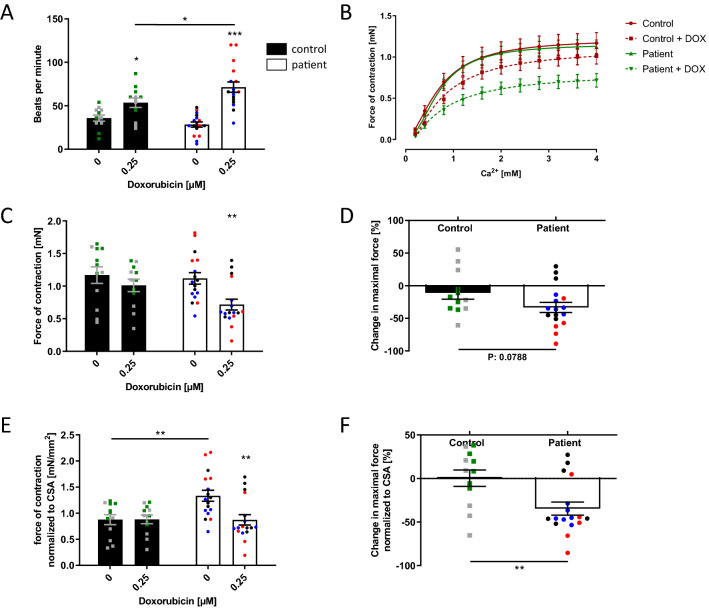Fig. 5.
DOX decreases the force of contraction in engineered human myocardium (EHM). A Beating frequency of control and ACT patient EHM increases after DOX treatment (0.25 µM). B The generation of the contractile force of control and ACT patient EHM is Ca2+-dependent, and impeded by DOX treatment (0.25 µM). C Maximal force of contraction of control and ACT patient EHM is lowered after incubation with 0.25 µM DOX. D The DOX-induced relative change of maximal contractile force is greater in ACT patient EHM compared to control EHM. E Maximal force of contraction of control EHM and ACT patient EHM normalized to cross-sectional area (CSA). F DOX-induced change in the maximal force of control and ACT patient EHM normalized to CSA. A–F Sample numbers: 12 control EHM from 2 differentiations, 17 ACT patient-EHM from 3 differentiations. Different colored dots indicate the different control lines (green: control 1, grey: control 2) and patient lines (blue: ACT1, black: ACT2 and red: ACT3) used. Statistical analysis was performed using Student’s t test or 2-way ANOVA analysis and Sidak’s multiple comparison test. Mean with SEM. *p < 0.05, **p < 0.01, ***p < 0.001. *Above single bars indicate statistical significances to untreated (0 µM DOX) conditions of the same group

